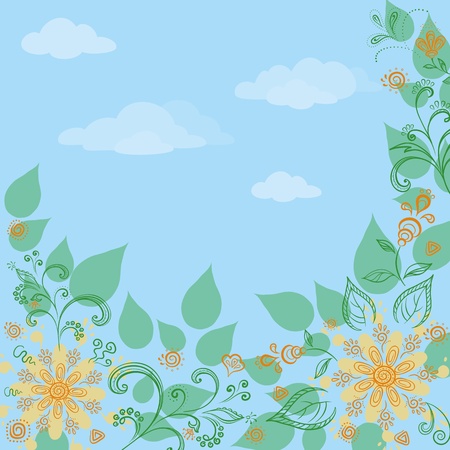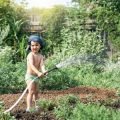Why Add Flowers to Raised Beds?
If you’re looking to make your raised garden beds both more beautiful and productive, adding flowers is a simple, practical move with big rewards. Mixing blooms in with your veggies isn’t just about good looks—it’s a smart strategy that can boost the health of your entire garden.
Attracting Pollinators for Better Harvests
One of the biggest benefits of planting flowers alongside your vegetables is attracting pollinators like bees, butterflies, and even hummingbirds. These helpful visitors are crucial for many fruiting crops—think tomatoes, squash, cucumbers, and peppers. When you bring more pollinators into your raised beds, you’ll likely see bigger yields and healthier plants.
Natural Pest Control
Some flowers do double duty by luring in beneficial insects that prey on common garden pests. For example, marigolds help deter nematodes and aphids, while nasturtiums attract aphid-hungry ladybugs. Using flowers for pest control means you can rely less on chemical sprays and keep your garden ecosystem balanced.
| Flower | Main Benefit | Veggies It Helps |
|---|---|---|
| Marigold | Repels nematodes & aphids | Tomatoes, beans, peppers |
| Nasturtium | Attracts ladybugs & deters whiteflies | Cucumbers, squash |
| Borage | Draws bees & deters tomato hornworms | Tomatoes, strawberries |
| Calendula | Attracts hoverflies (eat aphids) | Lettuce, carrots |
Boosting Curb Appeal and Joy
A little flower power goes a long way in making your raised beds look inviting and lively. Colorful blooms break up the green of vegetable leaves and add a cheerful vibe to any backyard or community garden. Plus, a pretty garden tends to get more attention and care—from neighbors, kids, and yourself!
Quick Tips for Mixing Flowers with Veggies:
- Select flowers that bloom at different times for season-long color.
- Stick to non-invasive varieties so they don’t crowd out your veggies.
- Choose edible flowers like nasturtium or calendula for double-duty harvests.
- Plant taller flowers at the north side of the bed so they won’t shade out shorter crops.
In Short: Flowers Bring Life to Your Raised Beds
Add some blooms to your next planting plan—not just for show but for stronger, more resilient veggie gardens. With the right mix of flowers and vegetables, you can create a thriving patch that’s as useful as it is beautiful.
2. Picking the Right Flowers: Native and Pollinator-Friendly Choices
When you’re adding flowers to your raised beds, picking the right varieties is key—not just for looks, but also for supporting local bees, butterflies, and other helpful insects. Choosing flowers that are native to your region or known as pollinator magnets helps boost your garden’s health and beauty with less fuss. Here’s how to make smart choices for your U.S. garden.
Why Go Native?
Native flowers are adapted to your local climate and soil, making them easier to grow and care for. They usually need less water and fertilizer, and they provide food and habitat for local wildlife. By mixing native blooms into your raised beds, you support a healthy ecosystem right in your backyard.
Pollinator Favorites
Certain flowers are especially good at attracting bees, butterflies, hummingbirds, and even beneficial wasps. These pollinators help your veggies and fruits set more fruit while keeping pest populations in check. Look for flowers that offer nectar all season long, and consider different shapes and colors to appeal to a wide range of pollinators.
Low-Maintenance Varieties
If you want beauty without extra work, go for low-maintenance flowers that don’t mind sharing space with vegetables. These varieties won’t crowd out your crops and can often tolerate a bit of shade or dry spells. Plus, many are self-seeding or perennial, so they’ll come back year after year with minimal effort.
Top Picks by U.S. Region
| Region | Native/Pollinator Flower Choices | Benefits |
|---|---|---|
| Northeast | Black-eyed Susan, Bee Balm, Asters | Tough in cold winters; attract bees & butterflies |
| Southeast | Coreopsis, Purple Coneflower (Echinacea), Blanket Flower | Drought-tolerant; thrive in heat; loved by bees & birds |
| Midwest | Milkweed, Prairie Clover, Sunflowers | Support monarchs; tolerate wind & open spaces |
| Southwest | Purple Sage, Desert Marigold, Penstemon | Handle hot, dry conditions; attract hummingbirds & bees |
| Pacific Northwest | Lupine, Oregon Sunshine, Yarrow | Adapted to cooler temps; resist mold & mildew; feed pollinators |
| California & West Coast | California Poppy, Tidy Tips, Clarkia | Drought-tolerant natives; easy reseeders; vibrant color mix |
Tips for Success in Your Raised Beds
- Mix it up: Combine tall flowers like sunflowers with low growers such as calendula for layers of color.
- Avoid overcrowding: Give both flowers and veggies enough room so air flows freely—this keeps disease down.
- Select continuous bloomers: Choose varieties that flower at different times to keep pollinators coming all season.
- Avoid pesticides: These can harm pollinators—opt for organic solutions if problems pop up.
- Check local sources: Ask nearby nurseries or cooperative extensions for native seed recommendations specific to your area.

3. Planning Your Layout for Companionship and Color
Designing your raised bed to weave flowers with vegetables is more than just a pretty idea—it’s a practical way to boost your garden’s productivity and health. A thoughtful layout lets you take full advantage of the benefits flowers offer, from attracting pollinators to deterring pests, all while creating a colorful, inviting space. Here’s how you can plan your raised bed for companionship and continuous color throughout the growing season.
Spatial Strategies: Where Flowers and Veggies Thrive Together
When planning your layout, think about the needs of each plant. Consider their height, sun requirements, and root depth. Tall flowers like sunflowers can be planted at the north end so they won’t shade out smaller veggies. Use low-growing flowers like nasturtiums or marigolds along the edges—they’ll spill over attractively and help keep pests away from your veggies.
| Flower | Ideal Placement | Vegetable Companions |
|---|---|---|
| Marigolds | Bed borders or between rows | Tomatoes, beans, lettuce |
| Nasturtiums | Trailing over edges | Cucumbers, squash, kale |
| Borage | Near tomatoes & strawberries | Tomatoes, strawberries |
| Zinnias | Middle/back of beds for height | Corn, beans, squash |
| Alyssum | As a ground cover in gaps | Lettuce, carrots, broccoli |
Row Planting vs Patch Planting
If you like order, alternate single rows of flowers and vegetables. For a wilder look—and more beneficial insect activity—interplant patches of flowers among clusters of veggies. Either way, keep taller plants to the north side (in the U.S.) to avoid shading shorter crops.
Succession Planting: Keeping Blooms Coming All Season Long
The trick to having color and pollinator action all season is succession planting. Start with early-bloomers like calendula and pansies in spring. As summer heats up, add zinnias and cosmos. Finish strong with late-season bloomers such as asters or rudbeckia that’ll keep things lively into fall.
| Season | Best Flower Choices for Blooms |
|---|---|
| Spring (March-May) | Pansies, calendula, alyssum |
| Summer (June-August) | Zinnias, cosmos, sunflowers, marigolds |
| Fall (September-October) | Asters, rudbeckia, salvia |
Practical Tips for Succession Success:
- Sow new flower seeds every few weeks in open spaces after harvesting early crops like lettuce or radishes.
- Choose flower varieties with different blooming times so something is always flowering.
- If possible, start some transplants indoors so you’re ready to fill gaps as soon as they appear.
- Pinch back spent blooms (deadhead) to encourage even more flowering.
Your Raised Bed as a Living Tapestry
The right layout turns your raised bed into a living tapestry where beauty and function go hand in hand. With a little planning and some seasonal adjustments, your garden will be buzzing with life—attractive to both people and pollinators all season long.
4. Planting and Maintenance Know-How
Step-by-Step Guide: Sowing and Transplanting Flowers in Raised Beds
Getting your flowers started in a raised bed isn’t complicated, but a few key steps will help your garden thrive. Here’s how you can do it like a pro:
Sowing Seeds Directly
- Prep the Bed: Loosen soil with a hand fork and remove any debris or weeds.
- Mark Rows or Spots: Use a stick or your finger to create shallow rows or holes for seeds—check seed packet depth guides.
- Sow Evenly: Sprinkle seeds evenly, cover lightly with soil, and gently press down for good contact.
- Water Gently: Mist with a gentle spray so you don’t wash the seeds away.
Transplanting Seedlings
- Harden Off Plants: Set seedlings outside for a few hours each day for about a week before planting to get them used to outdoor conditions.
- Dig Holes: Make holes slightly larger than the root ball of each plant, spaced according to mature size (see table below).
- Set in Place: Place seedlings at the same depth as they were growing in their pots, fill in around roots, and firm soil gently.
- Water In: Give each plant a good drink after transplanting.
Watering, Mulching, and Organic Fertilizing for Mixed Plantings
| Task | What to Do | Tips for Success |
|---|---|---|
| Watering | Water deeply when top 1-2 inches of soil are dry. Early morning is best. | Avoid wetting foliage; use drip lines or soaker hoses if possible. |
| Mulching | Add 2-3 inches of organic mulch (like shredded leaves or straw) around plants after they’re established. | Keeps moisture in, suppresses weeds, and protects roots from temperature swings. |
| Organic Fertilizing | Mild compost or slow-release organic fertilizer scratched into the surface every 4-6 weeks during growing season. | Avoid high-nitrogen fertilizers; balanced blends support both flowers and veggies if you’re mixing crops. |
Spacing Guide for Common Flower Choices in Raised Beds
| Flower Type | Recommended Spacing (inches) |
|---|---|
| Zinnias | 8-12″ |
| Marigolds | 8-10″ |
| Nasturtiums | 10-12″ |
| Alyssum | 6-8″ |
| Echinacea (Coneflower) | 18-24″ |
Pest Patrol and Ongoing Care
If you notice holes in leaves or signs of pests, try hand-picking bugs early in the morning, spraying with water, or using neem oil as an organic fix. Deadhead spent blooms regularly to keep flowers coming all summer long. Keep an eye on weather changes—raised beds dry out faster in hot spells but drain well after storms. With these hands-on tips, you’ll grow vibrant flowers that not only look great but also support pollinators and beneficial insects in your garden.
5. Dealing with Common Challenges
Bringing flowers into your raised beds is a great way to boost both beauty and biodiversity, but it does come with its own set of challenges. Here’s how to tackle some of the most common issues you might face—straight from gardeners who’ve been there, done that, and learned a trick or two along the way.
Overcrowding: Giving Everyone Room to Grow
It’s tempting to pack your raised beds with as many blooms as possible, but overcrowding can lead to weak plants and more disease. Use this simple spacing cheat sheet for popular flower choices:
| Flower Type | Recommended Spacing (inches) |
|---|---|
| Marigolds | 8-10 |
| Zinnias | 12-18 |
| Nasturtiums | 10-12 |
| Sunflowers (dwarf) | 12-15 |
| Alyssum | 6-8 |
Tip: Don’t be afraid to thin out seedlings if things look crowded early on. It feels tough, but your garden will thank you later.
Root Competition: Keeping Peace Below the Surface
Flowers and veggies often have different root habits. Some spread wide, others go deep. If you notice stunted growth or wilting, roots might be fighting for space or nutrients. Try these real-world solutions:
- Pair wisely: Match deep-rooted flowers (like sunflowers) with shallow-rooted veggies (like lettuce).
- Add compost: Top-dress with compost mid-season to give everyone a nutrient boost without disturbing roots.
- Raised bed dividers: Use stone, wood slats, or even recycled plastic edging inside your bed to gently separate aggressive root systems.
Pest Management: Keeping Bugs in Check Naturally
A biodiverse raised bed attracts all sorts of life—including pests. But don’t panic! Many flowers actually help keep bad bugs away. Here’s how to stay ahead of trouble:
| Pest Problem | Flower Solution | Other Tips |
|---|---|---|
| Aphids on veggies | Plant marigolds & nasturtiums nearby—they attract beneficial insects that eat aphids. | Spray with a gentle soap solution if infestation is heavy. |
| Caterpillars eating leaves | Add alyssum—attracts parasitic wasps that target caterpillars. | Hand-pick larger caterpillars early in the morning. |
| Mosquitoes around beds | Grow lavender or citronella geraniums at the edges. | Avoid leaving standing water near your garden area. |
Pro tip: Rotate your flower varieties each year to confuse pests and improve soil health!
Troubleshooting at a Glance: Quick Fix Table
| Challenge | Simple Fix |
|---|---|
| Crowding | Thin seedlings and stick to recommended spacing |
| Poor flowering | Add compost; check sunlight requirements |
| Pests taking over | Add companion flowers; encourage beneficial insects |
Remember: Raised bed gardening is about having fun and experimenting. There’s no one right way—just keep observing, learning, and enjoying those blooms!
6. Harvesting, Enjoyment, and Seasonal Tips
Cutting Blooms Without Disturbing Your Veggies
Harvesting flowers from your raised beds is rewarding, but it’s important to do it with care so you don’t disrupt the growth of your vegetables. Always use clean, sharp scissors or snips, and cut in the early morning when blooms are most hydrated. Focus on taking stems from the outer edges of flower clusters and avoid stepping into or leaning over vegetable patches to prevent soil compaction and plant damage.
| Flower Type | Best Time to Cut | Notes for Raised Beds |
|---|---|---|
| Zinnias | When first bloom opens fully | Snip above a leaf node for regrowth |
| Cosmos | When petals are just opening | Take long stems, avoids crowding veggies |
| Marigold | Fully open flower heads | Deadhead regularly for more blooms |
| Nasturtium | Anytime after flowers open | Edible—use in salads too! |
Attracting Beneficial Wildlife with Flowers
The right flowers will attract pollinators like bees and butterflies, as well as beneficial insects such as ladybugs and lacewings that help keep pests in check. Here are some easy favorites to mix into your raised beds:
- Alyssum: Draws hoverflies that control aphids.
- Borage: Attracts bees for better veggie pollination.
- Dill & Fennel: Provide food for butterfly caterpillars and attract predatory wasps.
- Sunflowers: Bring in birds that eat pests and look stunning all summer.
Tip:
If possible, plant a variety of flower shapes and colors to support different kinds of wildlife throughout the season.
Rotating Flowers for Year-Round Color & Diversity
To keep your raised beds looking great and maintain biodiversity, rotate flower types each season. This helps break pest cycles and improves soil health. Here’s a simple rotation plan:
| Season | Main Flower Choices | Biodiversity Benefits |
|---|---|---|
| Spring | Pansies, Sweet Peas, Calendula | Covers bare soil early, attracts early pollinators |
| Summer | Zinnias, Sunflowers, Cosmos, Marigolds | Sustains pollinators, repels pests, adds vibrant color |
| Fall | Asters, Chrysanthemums, Nasturtiums | Nourishes late-season pollinators, edible flowers extend harvests |
| Winter (mild climates) | Dusty Miller, Ornamental Kale, Violas | Keeps beds interesting visually, protects soil from erosion |
Pro Tip:
If you live where winters are harsh, mulch empty spots with straw or leaves to protect soil until spring planting resumes.
Your Beds Can Be Productive & Beautiful All Year!
Add fresh flowers every few weeks as earlier ones fade—your raised beds will stay lively and full of helpful wildlife while producing plenty of veggies too.


